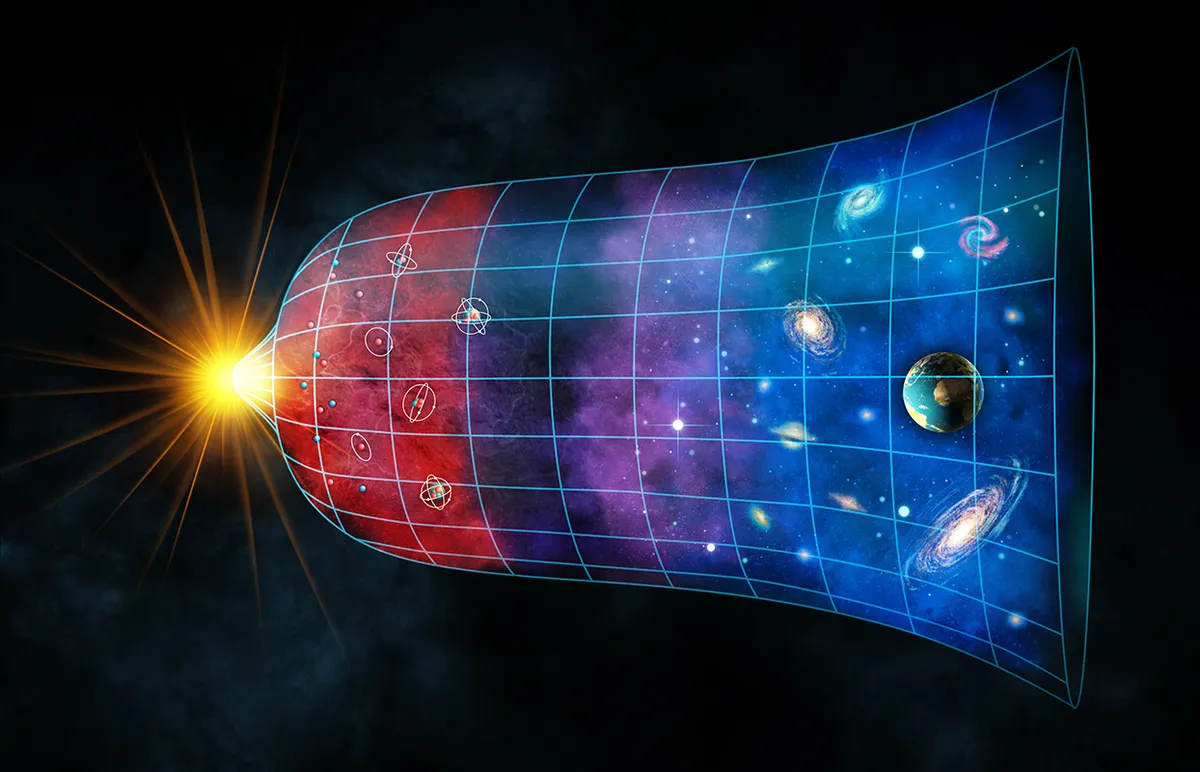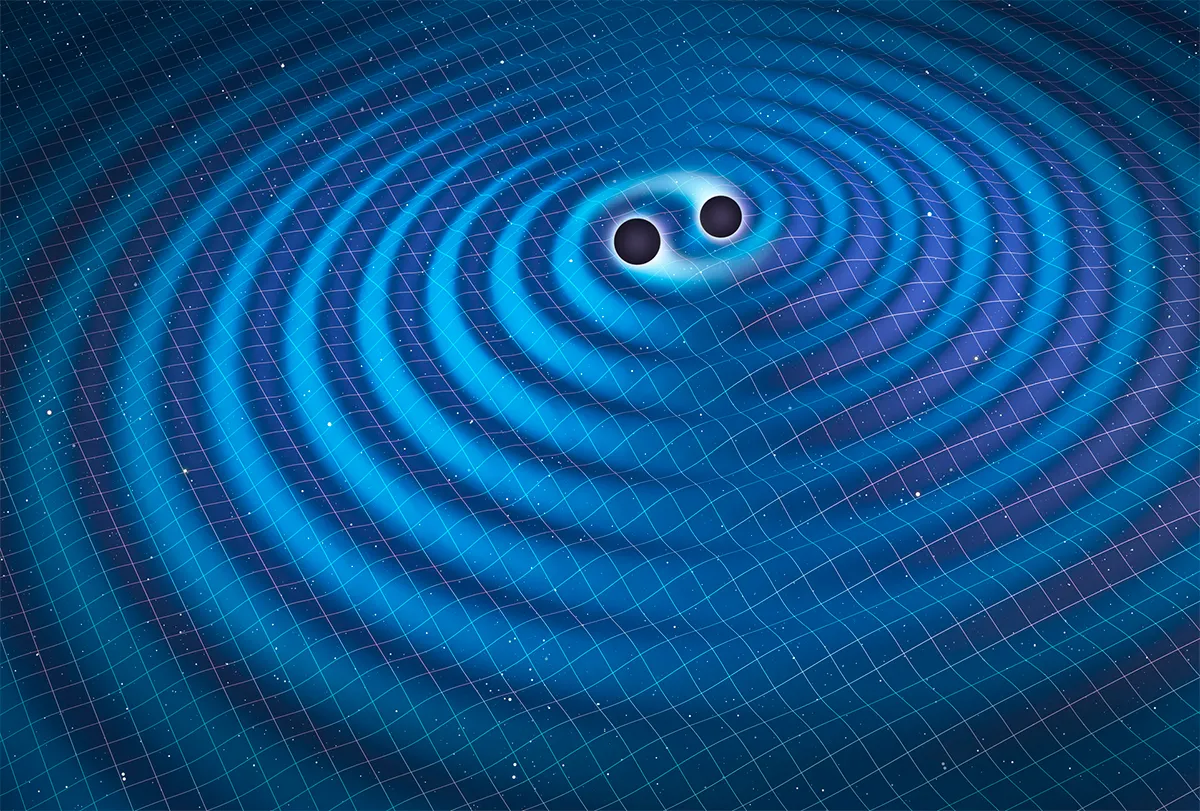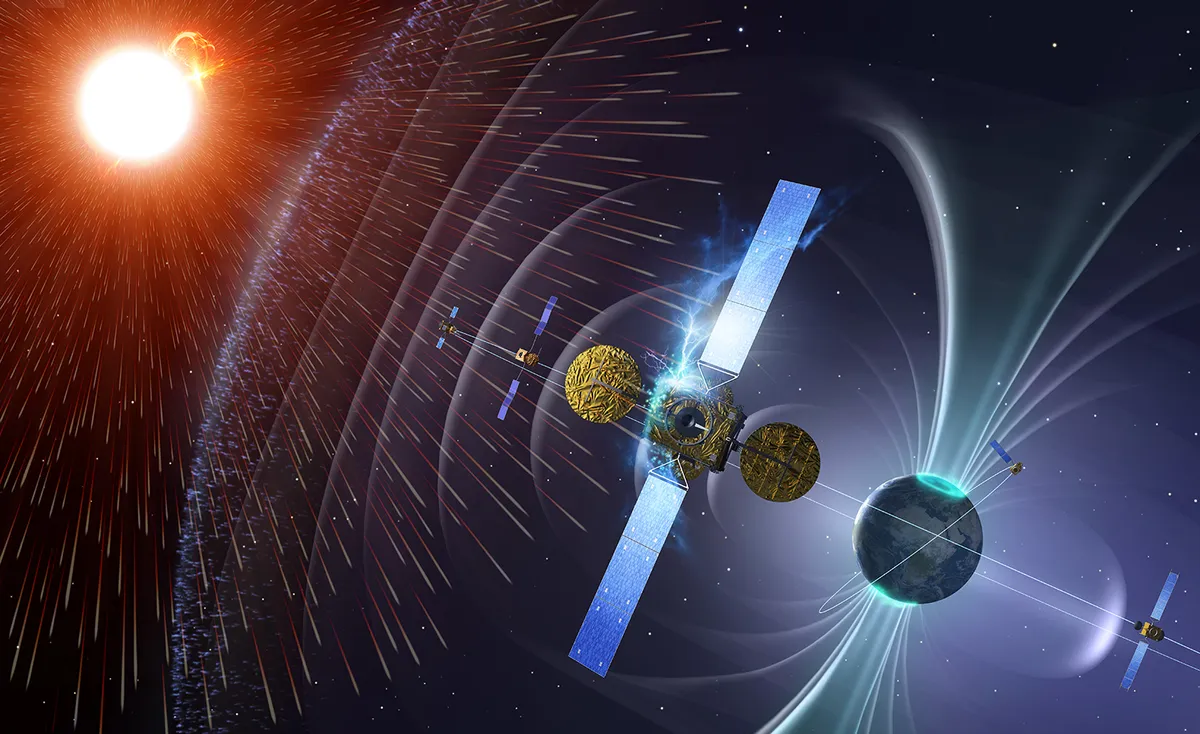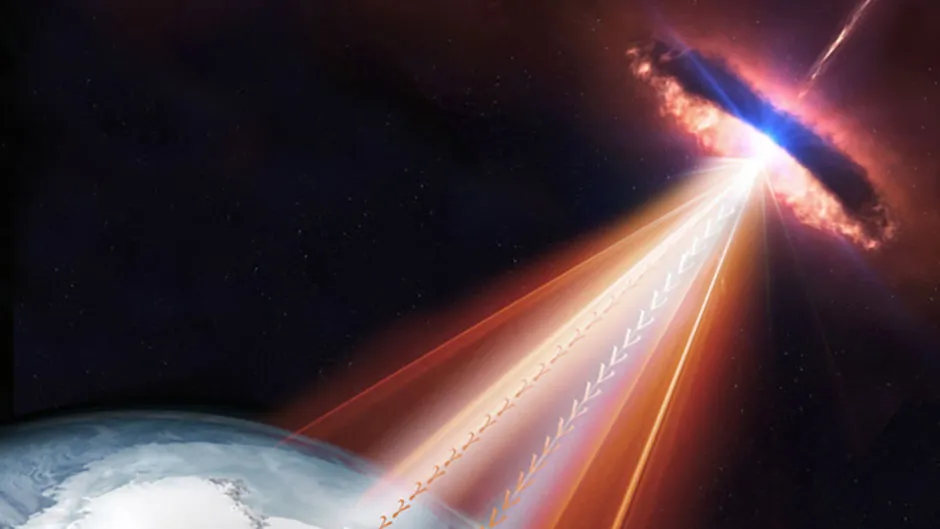When gazing at the night sky, it’s easy to picture the Universe as a calm and unhurried place. But in reality, out there in space, things move fast… really fast.
Where do we find the real speed freaks in the cosmos? Here’s a run-down of the 5 fastest things in the Universe.
Expansion of the Universe

Speed: faster than light
The Universe is known to be expanding. But the expansion of the Universe is not filling up ‘empty space’: rather, it is ‘space’ itself that is expanding.
Although the laws of physics say that two objects can’t move faster than the speed of light with respect to each other, there’s no such restriction on the expansion of the actual space through which they move.
This is how we can say that the early Universe expanded faster than light.
In principle, the furthest we can see in the Universe is called the ‘cosmological horizon’, beyond which light cannot yet have reached us during the lifetime of the Universe.
Although we can never see it, the Universe still exists beyond this limit, and those invisible parts of the Universe are receding from us at greater than the speed of light.
Unfortunately, we can never observe those parts of the Universe, so we can’t be sure how fast they are receding.
However, the entire cosmos may be a trillion trillion times as big as the ‘observable’ Universe.
So its most distant parts could be moving away from us at many millions of times the speed of light!
Light

Speed: 299,792.458km/s
Claiming that the expansion of empty space is the fastest thing in the Universe is cheating a bit.
It’s more honest to say that the fastest ‘physical’ thing in the Universe is light itself (or in fact the entire electromagnetic spectrum).
Of course, the Universe has a self-imposed speed limit – the speed of light, which is 299,792.458km/s.
Nothing moves faster than this.
But why can nothing move faster than the speed of light? Well, objects that have mass require energy to accelerate them and the laws of physics say that to accelerate a mass up to light speed would require infinite energy.
More confusingly, objects travelling faster than light would have to be travelling backwards in time!
Gravitational waves

Speed: 299,792.458km/s
All massless particles travel at light speed, as do the force fields such as the weak and strong nuclear forces and the gravitational force.
So do gravitational waves, the ripples in the fabric of space-time created by moving mass.
The first detection of gravitational waves was announced in 2016, and since then the study of these cosmic ripples has helped increase our understanding of the Universe.
Cosmic rays

Speed:299,792.4579999km/s
What about ordinary matter travelling at high speed? The record is held by cosmic rays.
These aren’t actually ‘rays’ at all – they’re subatomic particles created in the most powerful events in the Universe such as galaxy mergers and ‘hypernovae’ – the explosive deaths of extremely big stars.
The fastest cosmic ray yet detected was travelling so close to the speed of light that it had the same amount of energy as a medium-paced cricket ball, although it was a fraction of the size of a single atom!
Blazar jets

Speed: 299,492.666km/s
For large chunks of matter (as opposed to subatomic particles) the speed record is held by the ‘jets’ seen in ‘blazars’.
Cannibalistic black holes at the hearts of these active galaxies release huge amounts of energy that is funnelled into jets by a dense, highly-magnetic accretion disc.
Jets have been observed to move at about 99.9% the speed of light.
These blobs of material are at least the size of the Solar System!
This guide originally appeared in the August 2010 issue of BBC Sky at Night Magazine.
